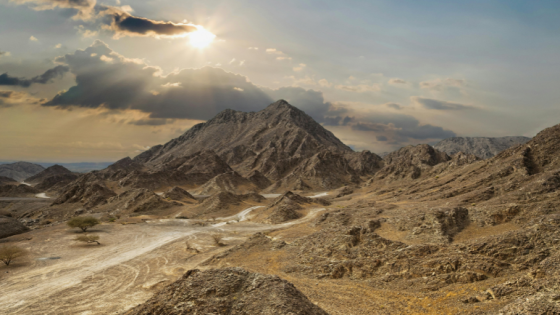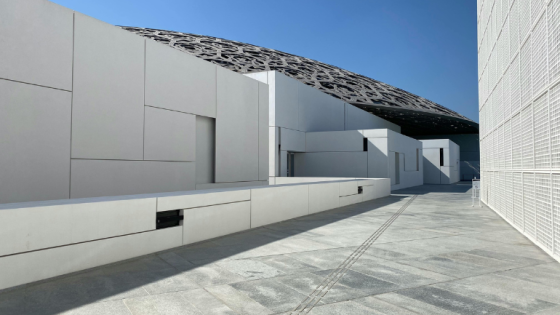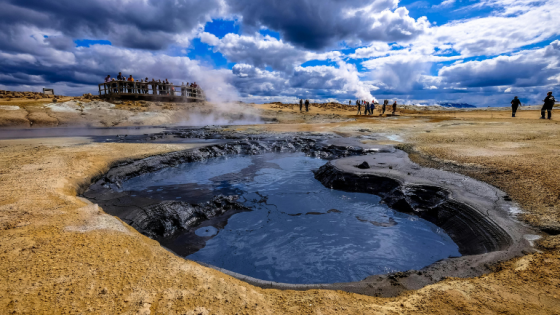Contents
- 1 Exploring the UAE Wadis
- 2 Hatta Wadi
- 3 Wadi Al Wurayah
- 4 Wadi Hayl
- 5 Wadi Al Bih
- 6 Wadi Ghalilah
- 7 Wadi Shawka: A Paradise for Hikers
- 8 Reasons Why the UAE is Home to a Significant Number of Wadis
- 9 Significance of Mountains and Wadis in the UAE
- 10 Threats Facing the Mountains and UAE Wadis
- 11 Exploring UAE Wadis and Waterfalls in Ras Al Khaimah
- 12 Tips for Visiting Ras Al Khaimah’s Wadis
- 13 Biodiversity in UAE Wadis
- 14 Guidelines for Visiting UAE Wadis
- 15 Activities to Enjoy in the UAE Wadis
- 16 Conclusion
- 17 Frequently Asked Questions (FAQs)
UAE Wadis are intricately linked to the mountains and boast a remarkable diversity of species. Although most of these wadis do not contain permanent water, they transform into unique wetland ecosystems during periods of rainfall. These areas are classified as wetlands due to their aquatic environments, which encompass temporary rainwater pools, bedrock and gravel riffles, and gravel pools. Such conditions create ideal breeding habitats for various species, including birds, dragonflies, and butterflies.
The majority of the UAE Wadis are located in the rugged mountains along the eastern coast. Wadi Al Wurayah, situated in the Hajar Mountains, holds the distinction of being the first protected mountain area in the UAE, extending into northern Oman. The climate in Wadi Al Wurayah is typical of a hot, hyper-arid mountain desert, with summer temperatures soaring close to 50°C.
Read more: UAE Ecotourism Sites: Discover Sustainable and Eco-Friendly Destinations in Dubai
Exploring the UAE Wadis
Amidst the expansive deserts of the Arabian Peninsula, the United Arab Emirates presents a striking combination of natural beauty and contemporary luxury. While the dazzling skyscrapers and lavish shopping centers of cities like Dubai and Abu Dhabi often dominate attention, the UAE’s landscape is also dotted with hidden treasures that entice adventurers looking for something different.
We encourage you to venture off the usual tourist paths and discover the top five wadis in the UAE, where rugged mountains, lush oases, and tranquil pools of crystal-clear water await. These captivating wadis offer a refreshing retreat from the urban frenzy and provide insight into the UAE’s rich natural heritage. Prepare to uncover the country’s lesser-known marvels as we explore the Top 6 UAE Wadis to Visit.
Read more: UAE Art Exhibitions: Discovering Creativity in Dubai and Abu Dhabi’s Vibrant Galleries
Hatta Wadi
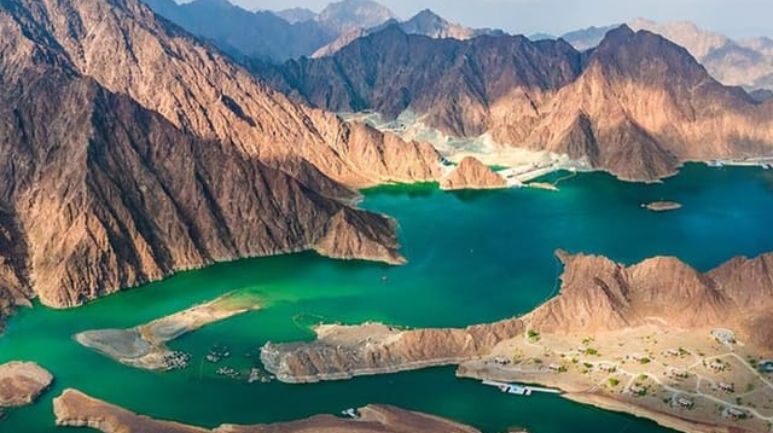
Hatta is one of the most famous and commercially developed wadis in the United Arab Emirates. This scenic destination offers a variety of organized adventure activities, making it a popular spot for both locals and tourists seeking outdoor excitement. A favored way to experience Hatta is by renting a bike and embarking on a self-guided tour through the breathtaking landscape.
Visitors can also try more adventurous activities such as zorbing or kayaking. For those looking for an exhilarating off-road experience, “wadi bashing” is a must. Horseback riding is another popular option, providing a unique perspective of the stunning scenery. Hatta is also home to the Hatta Mountains Conservation Area, a vital ecological refuge where one might spot the elusive Arabian Sand Cat and the Arabian Tahr, two rare and intriguing species.
In addition to its natural allure and adventure opportunities, Hatta features nearby attractions that enhance its appeal. The Hatta Heritage Village offers a glimpse into the region’s rich cultural history, while Hatta Wadi Park and Hatta Honey Bee Garden provide additional chances to connect with nature. Conveniently located along the E44, Dubai-Hatta Road, Hatta is easily accessible and a must-visit destination.
Read more: Dubai Antique Shops: Explore Vintage Treasures in the City’s Unique Antique Stores
Wadi Al Wurayah
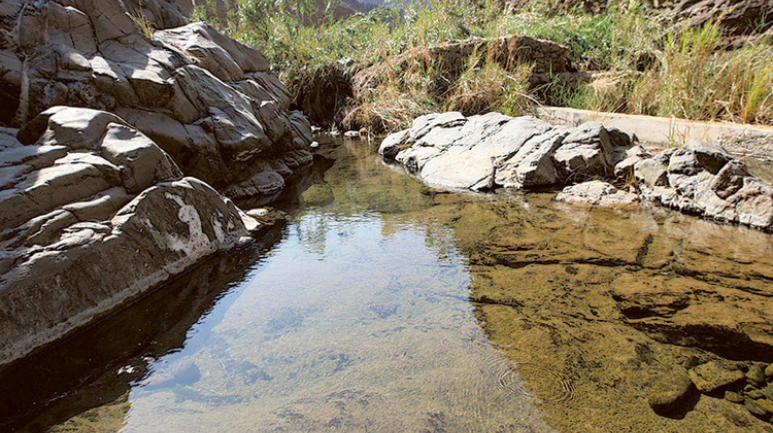
Elegantly set within the stunning landscapes of Fujairah, Wadi Al Wurayah is a hidden treasure that embodies the natural beauty of the United Arab Emirates. Covering over 31,000 acres, this wadi is a haven of pristine pools. What distinguishes Wadi Al Wurayah is its unique designation as one of the few valleys protected by an international treaty aimed at the sustainable use of wetlands.
This recognition has granted it the esteemed title of a Ramsar Wetland of international significance, underscoring its ecological importance and commitment to conservation. The wadi is home to a rich array of biodiversity, featuring over 300 plant species and more than 100 animal species. Among its inhabitants are the elusive Arabian leopards, graceful gazelles, and the iconic Arabian Tahr.
Geology enthusiasts will find Wadi Al Wurayah particularly intriguing, as it contains ophiolites, some of the rarest naturally occurring geological formations. While the wadi itself showcases the grandeur of nature, nearby attractions such as the Al Bidiya Mosque the Wadi Wurayah Dam, and the Natural Reserve offer additional opportunities to explore the area’s natural wonders.
Read more: Top 35 Dubai Nightlife Spots: Clubs, Bars, and Nightlife Activities to Enjoy
Wadi Hayl
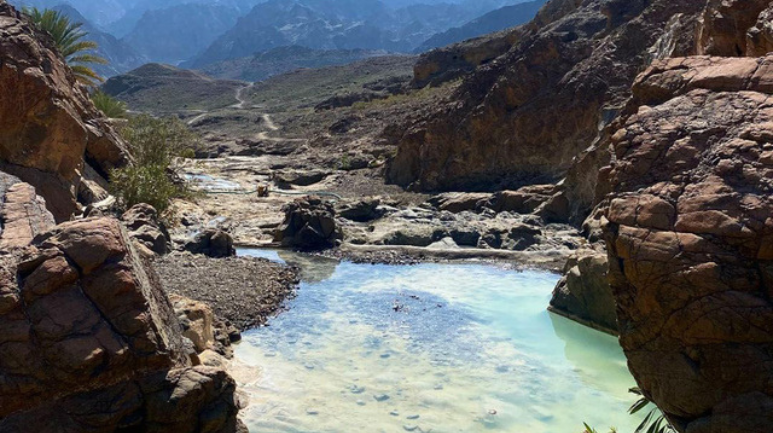
Located to the southwest of Fujairah, Wadi Hayl is a remarkable destination that seamlessly blends history and nature, providing visitors with a unique and enriching experience. Its closeness to agricultural lands grants it access to valuable freshwater sources, which are essential for its ecosystem.
Wadi Hayl transcends being a mere natural site; it is also a treasure trove of archaeology, featuring ancient inscriptions left by early inhabitants on the rocks. These carvings offer a fascinating insight into the region’s past. For adventurous souls, joining a trekking group is highly recommended to fully appreciate the wadi’s natural beauty and historical importance.
Within the wadi lies a fort that once served as the administrative center for the ruling family of Fujairah. This historical fort provides visitors with a chance to explore the cultural heritage and legacy of the area. As you wander through Wadi Hayl, you will discover additional attractions nearby. The Wadi Al Hayl Dam enhances the natural scenery, while the Al Hayl Fort invites exploration of its significant historical context.
Read more: Dubai Concert Venues: Top 13 Music Halls and Live Event Spaces to Experience
Wadi Al Bih
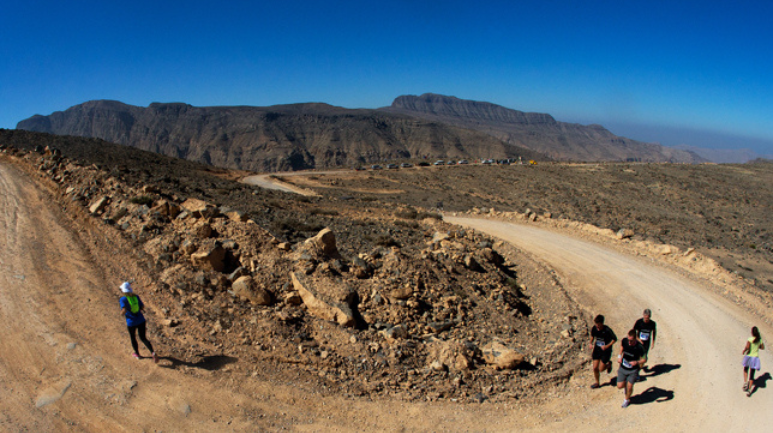
Often dubbed the “Grand Canyon of the United Arab Emirates,” Wadi Al Bih promises a stunning combination of natural scenery, fresh air, and breathtaking vistas. This extraordinary journey commences in the magnificent Hajjar mountains of Ras Al Khaimah and stretches across the Musandam peninsula in Oman, ensuring an unforgettable experience for travelers.
Wadi Al Bih is particularly appealing to bird watchers, as it is recognized as a paradise for bird enthusiasts. With over 140 species of birds inhabiting the area, don’t forget to bring your binoculars and prepare to be captivated by the feathered wonders that reside here.
Another compelling reason to visit Wadi Al Bih is the annual Wadi Bih Run, a beloved event that has been held for more than 25 years since 1993. This challenging race spans approximately 73 kilometers, starting in Dibba and winding through the rugged mountain terrain, ultimately leading runners to the scenic Musandam peninsula in Oman.
Read more: UAE Live Performances: Top Concerts and Events for Music Lovers in 2024
Wadi Ghalilah
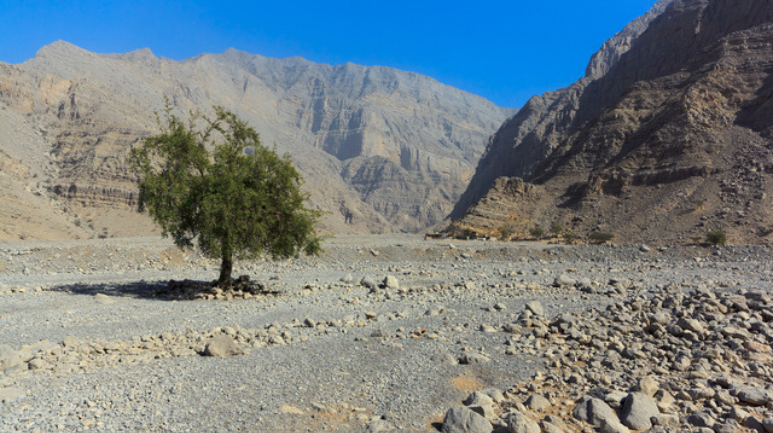
Situated in the core of Ras Al Khaimah, Wadi Ghalilah attracts outdoor enthusiasts, especially rock climbers and hikers, with its striking and rugged landscape. Known for its towering cliffs, this wadi presents an exhilarating adventure for those eager to test their physical limits and experience the beauty of nature.
One of the most popular hiking routes is the one-day trek from Wadi Ghalilah to Jebel Jais, the highest peak in the United Arab Emirates. This trek typically takes around 4-5 hours to reach the summit, rewarding hikers with stunning panoramic views that make the effort worthwhile. The ancient stone pathways along the old shepherd’s trail in Wadi Ghalilah are endearingly known as the “Stairway to Heaven,” adding a touch of mystique to the hike.
Furthermore, the surrounding mountains reveal traces of copper and iron, enriching the geological and historical significance of the climb. While exploring Wadi Ghalilah, you’ll also find the alluring Jebel Jais nearby, offering even more opportunities for adventure and exploration, making it a perfect complement to your journey.
Read more: Dubai Water Parks: Best Theme Parks and Waterpark Adventures to Visit in 2024
Wadi Shawka: A Paradise for Hikers

Wadi Shawka is a favored spot for adventure seekers, celebrated for its varied landscape featuring rocky terrains, vibrant greenery, and flowing streams. The ideal time to explore Wadi Shawka is during the winter or spring months when the water levels rise sufficiently for swimming in its natural pools.
Situated about 40 kilometers from the center of Ras Al Khaimah, Wadi Shawka attracts hikers with its stunning scenery, which includes pools and small waterfalls. The best months to visit are from November to April when the cooler temperatures create perfect conditions for hiking and picnicking by the refreshing waters.
Wadi Shawka offers a thrilling experience for those looking to navigate the rugged landscapes of Ras Al Khaimah. The hiking trail meanders through rocky areas, alongside small water pools, and ultimately leads to breathtaking waterfalls where you can enjoy a cool dip after your hike. It’s important to stay alert to changing water levels, as they can fluctuate quickly due to rainfall or melting snow from higher elevations.
Read more: UAE Live Concerts: Top 32 Music Events and Gigs in Dubai
Reasons Why the UAE is Home to a Significant Number of Wadis
A “wadi” is an Arabic term that describes a dry riverbed or valley commonly found in arid or semi-arid areas. These natural formations typically develop due to the sporadic flow of water, often caused by heavy rainfall or flash floods.
When rainwater rushes through a wadi, it carves a channel through the rocky landscape, resulting in a unique environment featuring narrow canyons, deep ravines, and sometimes small bodies of water, such as pools or oases. The United Arab Emirates is home to a notable number of wadis for several reasons:
Geographical Location
Positioned in the southeastern region of the Arabian Peninsula, the UAE is surrounded by extensive deserts, including the Rub’ al Khali (Empty Quarter) to the south. This geographical setting makes the country susceptible to sporadic but intense rainfall, contributing to the formation and revitalization of wadis.
The Topography
The rugged and mountainous terrains of the UAE, especially in the eastern part of the country, create ideal conditions for the development of wadis. Rainwater swiftly flows down these slopes, sculpting wadis as it moves.
The Climate
Although the UAE is primarily an arid region, it experiences occasional rain, particularly during the monsoon season from June to September. These short bursts of rainfall are often enough to temporarily fill the wadis, supplying vital water to the surrounding ecosystem.
Ecological Diversity
Wadis play a crucial role in the local ecosystems, acting as essential lifelines for both plant and animal life. These valleys provide vital habitats for various species that have adapted to the harsh, arid environment.
Read more: Abu Dhabi Water Activities: Thrilling Sea Adventures and Watersports in the UAE
Significance of Mountains and Wadis in the UAE
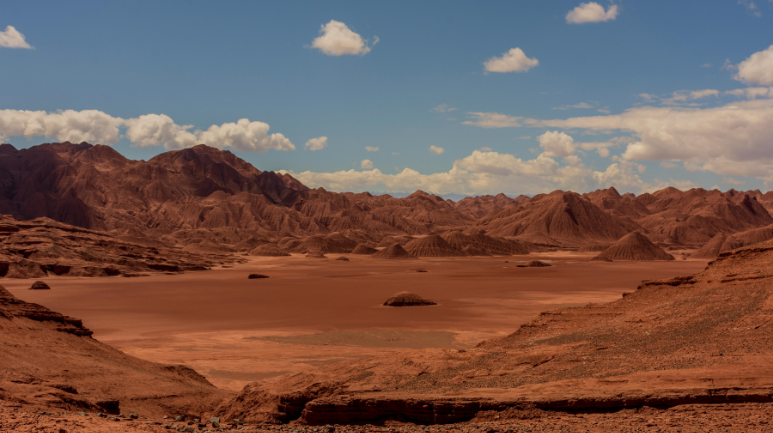
Mountains play a crucial role in promoting rainfall. When humid air encounters a mountain, it is compelled to rise and cool at higher elevations, leading to condensation and precipitation—an invaluable resource in the UAE. Additionally, wadis serve as habitats for endangered species; for instance, Fujairah’s Wadi Wurayah is recognized as the last sanctuary for rare animals such as the Arabian Leopard and the Arabian Tahr, along with hundreds of plant species.
Mountains also function as natural barriers against the wind. Wadi Al Wurayah is not only rich in biodiversity but also an important archaeological site, where remnants of ancient settlements dating back to 3000 BC have been discovered. The ecosystems within these wadis are characterized by interdependent species that rely on one another for survival.
Consider the potential relationships among various living and non-living entities: tadpoles, frogs, water beetles, plants, sunlight, vipers, and water. Here are some species found in the mountains and wadis of the UAE:
- Arabian Tahr.
- Arabian Spotted Eagle Owl.
- Caracal.
- Blanford’s Fox (Vulpes).
- Omani Saw-scaled Viper.
- Dhofar and Arabian Toads.
- Oman Garra.
- Acridocarpus Orientalis.
- Orchid (Epipactis Veratrifolia).
Read more: Dubai Nightclubs: Best Spots for Unforgettable Nightlife and Clubbing Experiences
Threats Facing the Mountains and UAE Wadis
Groundwater extraction for local agriculture is depleting the freshwater table in the Hajar mountain range, which can lead to the decline of natural vegetation in lower areas. Additionally, the intrusion of seawater into the freshwater table—primarily due to rapid agricultural expansion—results in elevated salt levels in both water resources and soil. This is a significant concern; as excess salts can hinder crop growth by impairing their ability to absorb water.
Tourist litter, wildfires, and vehicle tracks are damaging the mountain range. Such issues have led to the closure of Wadi Al Wurayah, allowing its fragile ecosystem to recover from human impacts. Litter poses a major problem because mountains have microclimates, and the unique flora and fauna there have limited reproductive cycles and are highly sensitive to disturbances.
Non-biodegradable materials like soda cans, plastic bottles, glass containers, and Styrofoam take an extensive amount of time to decompose, and some may never fully break down. The accumulation of these items over time can release toxic pollutants due to prolonged exposure to air, light, and water.
Climate change presents a significant threat to biodiversity in the wadis, as the species inhabiting these areas are particularly vulnerable to drastic climatic shifts. These species serve as critical indicators of ecosystem health, with their survival closely tied to the condition of their habitats. Other threats to the mountains and wadis in the UAE include:
- Overgrazing from introduced donkeys and goats.
- Urban development.
- Wildlife poaching.
- Quarrying and mining activities.
- Fragmentation and loss of habitat connectivity.
- Light and noise pollution.
- Human disturbances.
Read more: UAE Hot Springs: Discover Khatt’s Green Mubazzarah, a Hot Springs Resort Oasis
Exploring UAE Wadis and Waterfalls in Ras Al Khaimah
The hidden waterfalls and wadis of Ras Al Khaimah provide visitors with an unforgettable adventure filled with stunning views and unique plant and animal species endemic to the area. So get ready to pack your bags and embark on an extraordinary journey into nature! Before setting out, always check the weather conditions, as flash floods may occur during heavy rainfall.
Make sure to bring essential items such as water, sunscreen, and snacks, especially if you plan to hike or spend an extended period outdoors. Wear appropriate footwear that can handle rocky terrain while exploring the wadis and waterfalls. Additionally, respect local customs by dressing modestly (covering shoulders and knees) when visiting these natural sites.
Read more: UAE Groundwater Reserves: Abu Dhabi’s Arab Water Resources and Groundwater Recharge Levels
Tips for Visiting Ras Al Khaimah’s Wadis
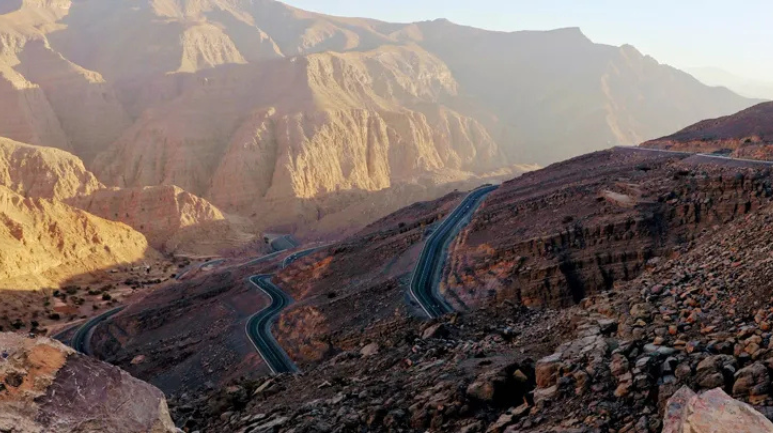
Discovering the hidden waterfalls and wadis of Ras Al Khaimah is a memorable experience that highlights the natural beauty of this lesser-known Emirate. Enjoy the unique landscapes and wildlife as you venture through these hidden gems.
- Bring plenty of drinking water, as temperatures can rise significantly during the day.
- Ensure you wear suitable footwear for hiking on uneven surfaces.
- Capture your adventures with a waterproof camera or smartphone case to protect your device from water exposure.
- Be environmentally conscious by not littering and leaving no trace behind.
Exploring the secret cascades and valleys of Ras Al Khaimah will create lasting memories. Experience the remarkable topography of Ras Al Khaimah for an extraordinary adventure!
Read more: UAE Natural Wonders: Discover Dhabi’s Beautiful Natural Attractions
Biodiversity in UAE Wadis
Wadis are distinctive natural ecosystems in the UAE, representing some of the few sources of freshwater available. Some wadis contain pools, while others are fed by springs. These areas boast a rich biodiversity, featuring several unique native species that are both sensitive and vulnerable.
For instance, Wadi Wurayah is home to the only native fish species found in the region, Garra borreliae. Additionally, wadis shelter endangered wildlife, such as the Arabian Tahr. Since March 2009, the Fujairah Municipality has taken measures to protect the beautiful and popular Wadi Wurayah.
Read more: UAE Desert Landscapes: Experience Dubai Royalty in Photography
Guidelines for Visiting UAE Wadis
When exploring the wadis of the UAE, it’s important to follow certain guidelines to ensure the preservation of these natural areas:
- Respect Nature: Keep your voice down and avoid playing loud music, as this can disturb local wildlife. Always remember to “leave no trace” by collecting all litter, whether it’s yours or not, since we all share this planet we call home.
- Travel Prepared: Use a 4×4 vehicle equipped with a spare tire when navigating the wadis. Don’t forget to refer to the Explorer Off-Road UAE guide for recommended routes.
- Check the Weather: Always review the weather conditions before your visit, as rain can lead to flash floods.
- Be Mindful of Wildlife: Avoid playing loud music while in the wadis, as it can scare away vulnerable wildlife that may be nearby.
- Drive Carefully: When driving in the wadis, be cautious and avoid damaging small plants and species. Natural flora and fauna can take a long time to regenerate.
- Avoid Campfires: Refrain from lighting campfires in the wadis, as they can harm local biodiversity.
- Protect Water Sources: Do not contaminate the pools found in the wadis.
- Don’t Abandon Pets: Never leave unwanted pets in the wadis or mountains, as they can pose a threat to local biodiversity. Native species often struggle against aggressive non-native animals.
- Dispose of Waste Properly: Always take your trash with you and dispose of it in designated bins at petrol stations. Unlike urban areas, there are no cleaning crews in the mountains.
- Reduce Waste: Whenever possible, opt for reusable items to minimize waste.
Read more: UAE Architecture: Modern Marvels and Vernacular Traditions in Dubai
Activities to Enjoy in the UAE Wadis
There are plenty of enjoyable activities to partake in while visiting the wadis:
- Bird Watching: This engaging hobby becomes even more rewarding once you discover the diverse bird species that inhabit these scenic spots.
- Hiking and Mountain Biking: Explore the stunning landscapes on foot or by bike.
- Rock Climbing: Challenge yourself on the natural rock formations.
- Picnicking: Enjoy a meal surrounded by nature.
- Clean-Up Initiatives: Participate in efforts to keep these areas clean.
- Camping: Spend a night under the stars.
- Wildlife Photography: Capture the beauty of nature while adhering to respectful guidelines.
- Meditation and Relaxation: Take a moment to breathe in the fresh air and escape the stresses of urban life.
Read more: UAE Oasis Locations; Desert Oasis Al Ain Oasis Liwa Oasis locations oases in the UAE
Conclusion
UAE Wadis invites adventurers to uncover their breathtaking landscapes and rich biodiversity, particularly in Fujairah. As you explore Wadi Al Bih, Wadi Ghalilah, and Wadi Showka, you’ll be captivated by the stunning vistas framed by the Hajar Mountains. Each wadi offers a unique perspective on the natural beauty of the United Arab Emirates, showcasing crystal-clear waters and lush greenery, perfect for hiking and photography.
The majestic Wadi Wurayah stands out as a must-visit destination, known for its picturesque waterfalls and vibrant wildlife. Whether you’re a local or a visitor, our curated list of wadis will ensure you discover the hidden gems of the region. Embrace the tranquility and charm of the UAE’s wadis, and let their beauty leave a lasting impression on your journey.
Read more: UAE Mangrove Forests; National mangroves forest in Emirates Dubai, Abu Dhabi
Frequently Asked Questions (FAQs)
Which is the largest wadi in the UAE?
Wadi Ham, which stretches over 30 kilometers between Masafi and Fujairah and was previously a vital route across the Hajar Mountains, is considered the UAE’s longest valley.
What is the most famous desert in the UAE?
Rub al Khali, The Great Sandy Desert. Rub’al Khali, also known as the Great Sandy Desert, is the world’s biggest sand desert, covering over 250,000 square miles. It is also regarded as one of the most important, due to the massive oil and natural gas deposits beneath its sands.
What is the importance of wadis?
Wadis are primarily designed to absorb extra rainwater after heavy rains so that it does not run down the drain. During droughts, precipitation infiltration in the soil helps to replenish water resources.
What are wadis in the UAE?
The United Arab Emirates has no permanent rivers, although it does have wadis, which are permanently or periodically dry riverbeds.
